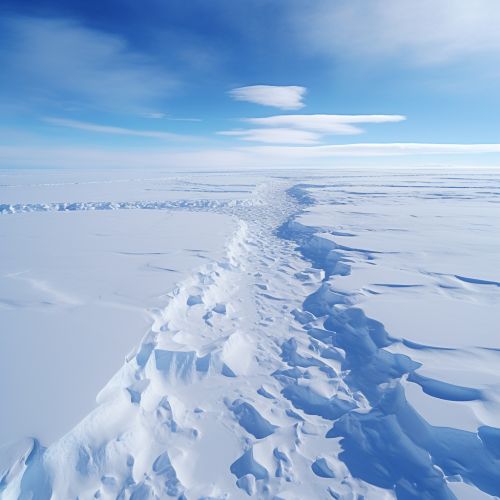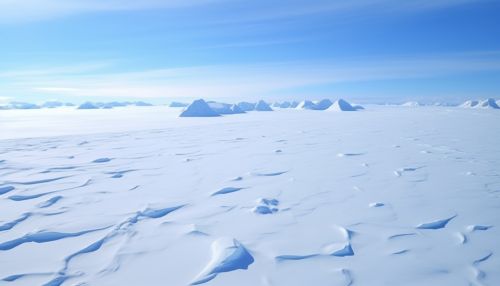West Antarctic Ice Sheet
Overview
The West Antarctic Ice Sheet (WAIS) is a large segment of the continental ice sheet that covers West Antarctica, the portion of Antarctica on the side of the Transantarctic Mountains which lies in the Western Hemisphere. The WAIS is classified as a marine-based ice sheet, meaning that its bed lies well below sea level and its edges flow into floating ice shelves. The ice sheet is bounded by the Ross Ice Shelf, the Ronne Ice Shelf, and outlet glaciers that drain into the Amundsen Sea.


Structure and Composition
The WAIS is composed primarily of ice, snow, and rock debris. The ice sheet is divided into two sections: the grounded ice sheet and the floating ice shelves. The grounded ice sheet is the portion of the ice sheet that is in contact with the underlying bedrock, while the floating ice shelves are the portions of the ice sheet that extend over the ocean, floating on the surface of the water. The ice sheet is fed by snowfall and glacier flow from the interior of the continent.
Dynamics and Movement
The movement of the WAIS is primarily driven by gravity and the underlying topography of the bedrock. The ice sheet flows from the interior of the continent towards the coast, where it either melts or calves off into the ocean as icebergs. The speed of this flow varies across the ice sheet, with the fastest flow rates occurring in ice streams. These ice streams are corridors of fast-flowing ice within the ice sheet, and they play a key role in the overall mass balance of the WAIS.
Climate Interactions
The WAIS plays a significant role in the global climate system. It influences atmospheric and oceanic circulation patterns, and it has a major impact on sea level. Changes in the volume of the WAIS can lead to significant changes in global sea level. Currently, the WAIS is losing mass, primarily due to increased melting from the underside of the floating ice shelves. This loss of mass is contributing to global sea level rise.
Research and Monitoring
Research on the WAIS is conducted by scientists from around the world. These researchers use a variety of methods to study the ice sheet, including satellite remote sensing, ground-based surveys, and computer modeling. The goal of this research is to understand the past, present, and future behavior of the WAIS, and to predict how it will respond to future changes in climate.
Future Projections
Future projections for the WAIS are uncertain. Some studies suggest that the ice sheet may be unstable, and that it could collapse in the future, leading to a significant rise in global sea level. Other studies suggest that the ice sheet may be more stable, and that it could continue to lose mass at a slow rate for many centuries to come. The uncertainty in these projections is due primarily to uncertainties in future climate conditions and in the complex dynamics of the ice sheet itself.
